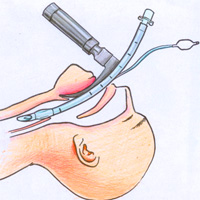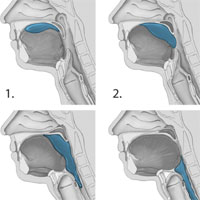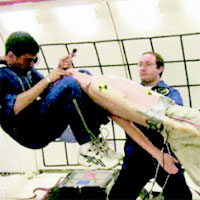Tag: study

Tracheal Intubation Practice and Safety Across International PICUs
There were both similarities and differences in tracheal intubation practice and outcomes across international PICUs. Fewer adverse tracheal intubation–associated events were reported from International versus North American... read more

The Importance of Skeletal Muscle Ultrasound in Critical Care
With growing interest in understanding muscle atrophy and function in critically ill patients and survivors, ultrasound is emerging as a potentially powerful tool for skeletal muscle quantification. However, there are key... read more

Effects of High-Flow Nasal Cannula on the Work of Breathing in Patients Recovering From ARF
High-flow nasal cannula, when set at 60 L/min, significantly reduces the indexes of respiratory effort in adult patients recovering from acute respiratory failure (ARF). This effect is associated with an improvement in... read more

Safety of Early Tracheostomy in Trauma Patients After Anterior Cervical Fusion
Cervical spine injuries (CSIs) can have major effects on the respiratory system and carry a high incidence of pulmonary complications. Respiratory failure can be due to spinal cord injuries, concomitant facial fractures or... read more

Threshold Analysis as an Alternative to GRADE for Assessing Confidence in Guideline Recommendations Based on Network Meta-analyses
Guideline development requires the synthesis of evidence on several treatments of interest, typically by using network meta-analysis (NMA). Because treatment effects may be estimated imprecisely or be based on evidence lacking... read more

Dysphagia in the ICU: Epidemiology, Mechanisms, and Clinical Management
In the light of the fact that the clinical consequences of ICU-acquired dysphagia (e.g., aspiration-induced pneumonitis/pneumonia) can often be observed on ICUs, more data on underlying mechanisms and/or risk factors seems... read more

Indications and Outcomes of Extracorporeal Life Support in Trauma Patients
Data from the largest registry of critically ill trauma patients receiving extracorporeal life support (ECLS) demonstrates reasonable survival. With growing experience and improved safety profile, trauma should not be considered... read more

Unsupervised Analysis of Transcriptomics in Bacterial Sepsis Across Multiple Datasets Reveals Three Robust Clusters
The three sepsis subtypes may represent a unifying framework for understanding the molecular heterogeneity of the sepsis syndrome. Further study could potentially enable a precision medicine approach of matching novel immunomodulatory... read more

Thromboelastography Predicts Thromboembolism in Critically Ill Coagulopathic Patients
Critically ill patients with deranged conventional coagulation tests are often perceived to have an increased bleeding risk. Whether anticoagulant prophylaxis for these patients should be withheld is contentious. This study... read more

Left ventricular systolic function evaluated by strain echocardiography and relationship with mortality in patients with severe sepsis or septic shock
Worse global longitudinal strain (GLS) (less negative) values are associated with higher mortality in patients with severe sepsis or septic shock, while such association is not valid for left ventricular ejection fraction... read more

Risk Stratification Using Oxygenation in the First 24 Hours of Pediatric ARDS
Oxygenation measured 24 hours after acute respiratory distress syndrome onset more accurately stratifies risk, relative to oxygenation at onset, in both children and adults. However, waiting 24 hours is problematic, especially... read more

Monitoring the Relationship Between Changes in Cerebral Oxygenation and Electroencephalography Patterns During Cardiopulmonary Resuscitation
Real-time monitoring of cerebral oxygenation and function during cardiac arrest resuscitation is feasible. Although voltage suppression is the commonest electroencephalography pattern, other distinct patterns exist that may... read more

Determination of Brain Death Under Extracorporeal Life Support
The worldwide use of extracorporeal lung/life support is increasing in severe lung failure (veno-venous extracorporeal membrane oxygenation, vvECMO) or in cardiac arrest/severe circulatory failure (veno-arterial ECMO, vaECMO).... read more

Airway Management in Microgravity
In the near future, space programs will shift their focus toward long‐duration interplanetary missions, in particular to the Moon and Mars. These exploration missions will be associated with an increased risk of acute medical... read more








